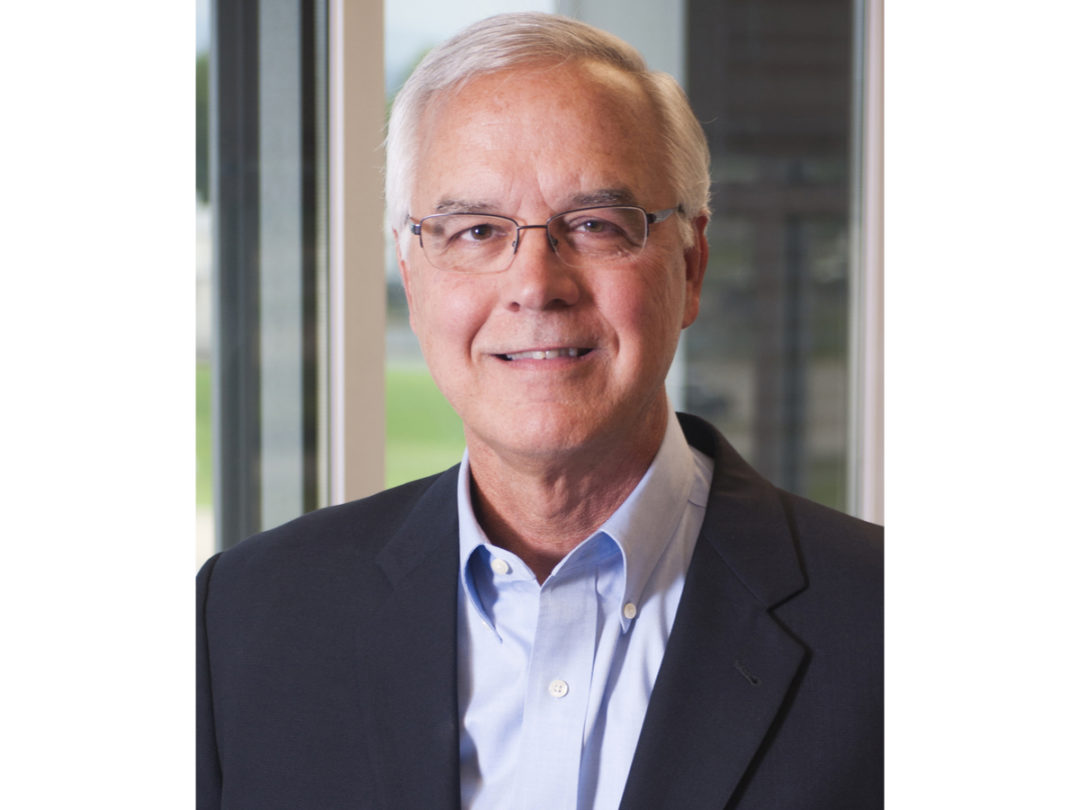Interview: Denis Reilly of Kenco
In our continuing series of discussions with top supply-chain company executives, Denis Reilly of Kenco discusses disruptions from Covid-19, digital transformation, and the quest for innovation.

Denis Reilly is president and CEO of Kenco, a third-party logistics provider (3PL) whose services include distribution, transportation management, material handling equipment and fleet services, e-commerce fulfillment, and supply chain intelligence solutions.
Reilly has more than 35 years of experience in the logistics industry. Prior to joining Kenco in 2017, he was the CEO of St. George Logistics and has held executive and senior leadership posts with USA Dry Van Logistics, Geodis, MIQ Logistics, and Menlo Logistics. He began his career in logistics with Frito-Lay in 1983.
Reilly is a member of the Kenco board of directors, the Council of Supply Chain Management Professionals (CSCMP), and the University of Tennessee Global Supply Chain Institute Advisory Board. A graduate of the University of Tennessee, he holds a bachelor’s degree in logistics and an MBA in logistics and marketing. He recently spoke with DC Velocity Editorial Director David Maloney.
Q: How have Kenco’s operations been affected by the Covid-19 crisis?
A: Many, if not all, businesses across the nation have felt the impact of this pandemic, including 3PLs. At Kenco, we manage numerous supply chains across various industries. Encompassing over 90 distribution centers across North America, these supply chains range from ones that put food on peoples’ tables to those that ensure medical supplies are delivered to hospitals.
Our day-to-day operations have changed in accordance with the CDC [Centers for Disease Control and Prevention] guidelines and our efforts to protect the health of our employees. We initiated a Covid-19 Task Force months ago to focus on ensuring the safety of our employees while ensuring business continuity. Like many, we quickly converted our headquarters staff to work at home and, in the field, adopted the recommended social distancing policies, temperature checks, quarantines when applicable, enhanced cleaning processes, and adoption of face coverings.
Many of our customers have experienced significant and sudden volume changes. Some customers, such as those in the food, consumer packed goods (CPG), and health-care industries, have seen increases in demand of 30% to 200%, while others have experienced significant decreases. The challenges associated with significant demand spikes were managed through collaborative planning and the “can-do” attitude of our associates.
We are working with all customers to help them optimize and reduce costs during this challenging time. And our engineers and other supply chain professionals are prepared to help customers regain and recover when the coronavirus situation improves for their businesses and industries.
As the Covid-19 pandemic crisis evolves, we continue to monitor the situation and take appropriate actions to address potential concerns and risks. As always, Kenco’s primary focus is on the health and safety of our associates and customers.
Q: How will Covid-19 change future supply chain design?
A: The effect that Covid-19 has had on the supply chain is unlike any other disruption I’ve ever witnessed. A disruption of this size will absolutely impact many facets of the supply chain, including strategic design and tactical execution.
For example, we will likely see a resurgence of nearshoring or movement of some manufacturing back into the U.S., especially around key ingredients and products in the health-care industry. This pandemic will accelerate the growth of e-commerce, as during this time, everyone is getting accustomed to buying online.
In addition, the adoption of automation in distribution operations will probably accelerate, providing enhanced scalability and productivity. Finally, I think there will be a renewed focus on resilient supply chains and contingency planning. Strategies such as adding manufacturing and distribution locations, port diversification, and increased safety stocks will be essential to prevent future disruptions to supply chains.
Q: Kenco offers a wide array of supply chain services, from traditional warehousing and transportation to real estate management. How does that provide an advantage for your customers?
A: Kenco’s comprehensive solutions allow us to meet all of our customers’ needs across the supply chain. Customers typically outsource design and execution activities that are not their core competencies. We have the people, best practices, and technology that enable us to proactively look across our customers’ whole supply chain to drive efficiencies. In addition, our integrated solutions provide customers with a “one stop shop” for outsourcing, resulting in a competitive advantage from both a cost and service perspective.
Q: Innovation has been an emphasis for Kenco for many years, including the establishment of the Kenco Innovation Labs. How has this helped to serve the industry?
A: The world around us is continuously changing and so are the needs of the supply chain. The solutions that worked well in the past may not be adequate in the current and future environment. Therein lies the need for innovation.
Innovation is a key priority for Kenco because it allows us to provide our customers with best practices to meet their needs. In our Innovation Lab, we work with a wide variety of vendors to test emerging technologies in a real-world dedicated warehouse space. Our Innovation Lab functions as a formal space to review, research, and promote new ideas to bring futuristic solutions to our customers and the industry.
Vendors bring new technologies to our lab, where we can vet them carefully before implementing them in our day-to-day operations. We had one vendor bring in a robot for testing. It worked for a few days and then shut down. What we found was that there was a lot of pollen buildup around the sensors that caused it to shut down. The vendor made some quick modifications, and then its product worked effectively.
Another example is our development of the LoadProof app [a mobile app that photo-documents shipments as they move through the supply chain]. This was created through the collaboration of our warehouse operations and technology teams. The end result is a publicly available application that has become an industry standard in retail chargeback avoidance and compliance.
Q: Kenco is the largest woman-owned 3PL in the U.S. Does this unique status provide an advantage?
A: I view Kenco’s diversity as a competitive advantage because we choose the most talented individuals for every role, regardless of gender. At Kenco, we actively promote the advancement of women in an industry that is historically male-dominant.
From our chairwoman and owner to the vice president of innovation and the many women who are Kenco general managers operating fulfillment warehouses on behalf of our clients, women play a major role in our success. They are in these roles because they are the best at what they do. In recognition of this, a large CPG customer recognized Kenco for promoting the advancement of women by selecting us as its Woman-Owned Supplier of the Year.
Q: You have said that your vision for Kenco is that it will lead the digitalization of the supply chain. Why is that important?
A: I strongly support the digital transformation of the supply chain. At Kenco, digitalization is a top priority that we are taking very seriously, as is evidenced by our investment in technology, people, and our recent Innovation Lab expansion.
Most companies realize they need a digital transformation of their supply chain but lack the required knowledge, expertise, and focus to successfully achieve it. Kenco, as a supply chain solutions and services provider, sensed this market need early on and is working to lead the way in helping our customers with their transformation efforts.
Related Articles

Copyright ©2024. All Rights ReservedDesign, CMS, Hosting & Web Development :: ePublishing